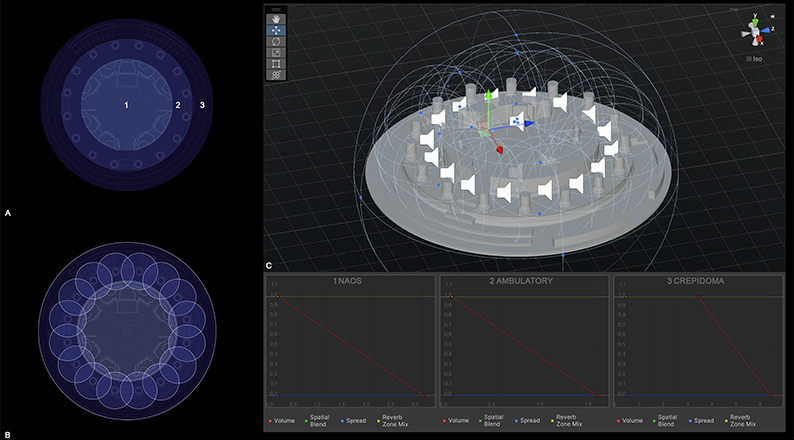
Invisible architecture, communicating space through sound models
Abstract
For years now, the increasing development of virtual reality technologies and digitisation processes in architecture has been leading cultural heritage communication towards an increasingly sustainable and inclusive approach. In this sense, the accumulation of data and, consequently, of specific information that the models bring with them, offers the opportunity for numerous insights related to the conversion of parameters to achieve an even broader communication towards users with perceptual limitations. The topic of perception, although now intrinsic in the fundamental criteria of architectural design, may receive less public attention compared to more immediate issues like building accessibility.
From a practical point of view, the most innovative technologies to improve the quality of life of blind subjects come mainly from neuroscience laboratories, also and above all to assess the impact of so-called sensory substitutional devices on brain activity. What is presented in this study is therefore to extend what are the operating principles of the above-mentioned tools and contextualise them within the domain of the perception of valuable architectural space, for an understanding of geometry and proportion through sound.
DOI: https://doi.org/10.20365/disegnarecon.32.2024.18
Keywords
Full Text:
PDFRefbacks
- There are currently no refbacks.
Copyright (c) 2024 Salvatore Di Pace, Alfonso Ippolito, Francisco Juan-Vidal
DISEGNARECON
ISSN 1828 5961
Registration at L'Aquila Law Court no 3/15 on 29th June, 2015.
Indexed in SCOPUS. Diamond Open Access. All papers are subjected to double blind peer review process by qualified reviewers.
Journal founded by Roberto Mingucci
